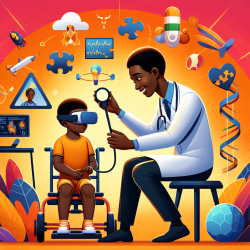In recent years, there has been a growing recognition of the need to include diverse voices in discussions about adolescent sexual and reproductive health (ASRH). The research article "Mind the Gaps: The Need for Inclusion of Male-Identified Voices in Adolescent Sexual and Reproductive Health" sheds light on the often-overlooked perspectives of male-identifying youth. This blog post explores how practitioners can improve their skills by implementing the outcomes of this research or by delving deeper into further studies.
The Importance of Inclusive Sexual Health Education
The study highlights that traditional sexual health education often centers on female-identifying individuals, leaving male-identifying youth feeling uninformed and powerless regarding their own sexual and reproductive health (SRH). This gap in education not only affects their understanding but also impacts their ability to engage in healthy relationships.
The research emphasizes the need for culture-centered and gender-transformative approaches to ASRH. By incorporating these methods, educators can create a more inclusive environment that acknowledges the diverse experiences of all students. This shift is crucial for addressing health inequities and promoting a more comprehensive understanding of SRH among young people.
Implementing Research Findings
For practitioners looking to enhance their approach to ASRH, the following strategies can be derived from the research:
- Cultural Sensitivity: Develop programs that consider local cultural contexts and address the unique needs of historically marginalized groups, including Black, Latino/a/x, LGBTQ+, and immigrant youth.
- Gender-Inclusive Curriculum: Ensure that SRH education includes diverse gender identities and sexual orientations. This inclusivity can reduce homophobic bullying and improve mental health outcomes for all students.
- Create Safe Spaces: Establish environments where male-identifying youth feel comfortable discussing their sexuality and emotional wellbeing. This can involve creating support groups or clubs that provide social and emotional support.
The Role of Practitioners in Driving Change
Practitioners play a pivotal role in transforming SRH education. By advocating for inclusive curricula and fostering open dialogues about gender and sexuality, they can help dismantle harmful stereotypes and empower all students to take charge of their sexual health.
The research underscores the importance of engaging male-identifying youth as active participants in their own education. By listening to their perspectives and involving them in program development, educators can create more effective and meaningful learning experiences.
Encouraging Further Research
This study serves as a call to action for continued exploration into the impacts of current SRH education models on male-identifying youth. Practitioners are encouraged to pursue further research to develop interventions that address the specific needs of this group.
To read the original research paper, please follow this link: Mind the Gaps: The Need for Inclusion of Male-Identified Voices in Adolescent Sexual and Reproductive Health.










